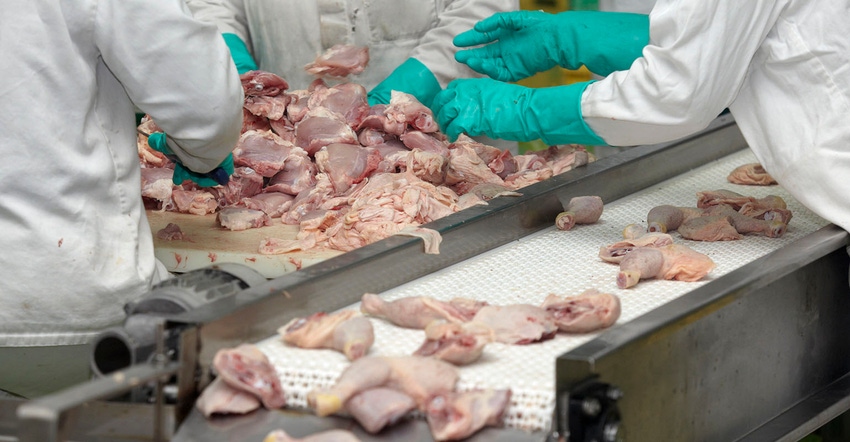
By Mike Dorning and Michael Hirtzer
Coronavirus cases are rising, but the Trump administration is making its last push to allow chicken slaughterhouses to speed up production lines, potentially threatening social distancing that’s crucial to keeping workers safe.
Three days after President Donald Trump lost his re-election bid, the U.S. Department of Agriculture submitted a proposal to raise the maximum line speed by 25% to the White House Office of Management and Budget for review. That’s typically the last step before a proposed regulation is published.
The move risks bringing back a wave of coronavirus infections that shut several meat plants earlier this year just as the winter kicks in and cases surge across the U.S. Critics also say it’s a lame-duck payoff to poultry producers that have been long-time supporters of Trump, who is fighting to keep office. It’s unclear if a final rule could be issued before President-elect Joe Biden takes over.
“They are racing through a rule that could very seriously endanger workers and consumers,” said Deborah Berkowitz, a former senior Labor Department official in the Obama administration. “This is the political payback to the poultry industry for being very close and supporting the administration.”
The Obama-Biden administration rejected proposals to allow faster processing lines at chicken plants after two years of study, said Berkowitz, who was chief of staff and a senior policy adviser for the Occupational Safety & Health Administration. Democratic presidential primary candidates Cory Booker, Elizabeth Warren, Bernie Sanders and Vice President-Elect Kamala Harris also backed legislation to prohibit USDA from granting line-speed waivers.
A USDA spokesman said the agency has been gathering data and assessing the ability of chicken plants to maintain process controls for years and that this proposal was already on the regulatory agenda this spring, before the elections. He also highlighted that line speeds apply to the evisceration process, which is mainly done by machines and not people.
In a notice on the OMB website, the agency said the change would allow poultry processors “to slaughter birds more efficiently while continuing to ensure food safety and effective online carcass inspection.”
Meat and poultry workers have been especially hard hit by the pandemic, with at least 19,800 infected or exposed to the virus and at least 128 deaths, according to the United Food and Commercial Workers International Union. Faster line speeds could mean more workers at factories at one time and also increase employee injuries, said Marc Perrone, president of the union, which represents more than 250,000 meatpacking and food processing workers.
“Slower line speeds protect workers from injuries and ensure safe social distancing to stop the spread of virus,” he said. “With poultry line speeds already moving at a breathtaking pace, any effort to increase these speeds is a direct threat to worker safety.”
The Trump administration has already used executive authority to loosen meat processing regulations. Last year, the USDA eliminated maximum line speeds for hog slaughterhouses. The department has also issued waivers to permit individual poultry plants to operate at line speeds above the current federal maximum of 140 chickens bird per minute.
“The modernized system has been studied, debated, and reviewed in depth for 20+ years to assure its effectiveness in further modernizing chicken inspection while improving food safety and protecting workers,” said Tom Super, a spokesman for the National Chicken Council, an industry association.
The USDA spokesman added injuries are dropping among poultry-processing workers. The reported injury and illness rate dropped to 3.2 per 100 full-time workers in 2019, down from 4.2 per 100 full time workers in 2016, according to the Bureau of Labor Statistics.
There’s also a period of public comment and review that’s typically required after the publication of a proposed rule, which means it may not be approved before Trump steps down.
Berkowitz, who is now at the National Employment Law Project, pointed to the political support for Trump from industry giants, while Perrone urged Biden to reverse the proposed Trump regulation if it is issued before the Democrat takes office.
The USDA in April authorized a record amount of line-speed waivers in the wake of the coronavirus outbreak that sickened thousands of workers at poultry plants, hitting chicken production. The waivers are being challenged in court by unions as “arbitrary and capricious” use of regulatory authority. The proposed rule change would eliminate the need for waivers.
© 2020 Bloomberg L.P.
Read more about:
Covid 19About the Author(s)
You May Also Like




